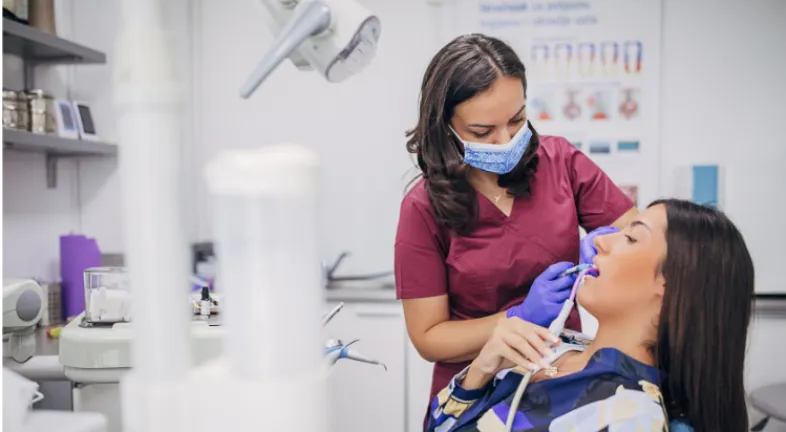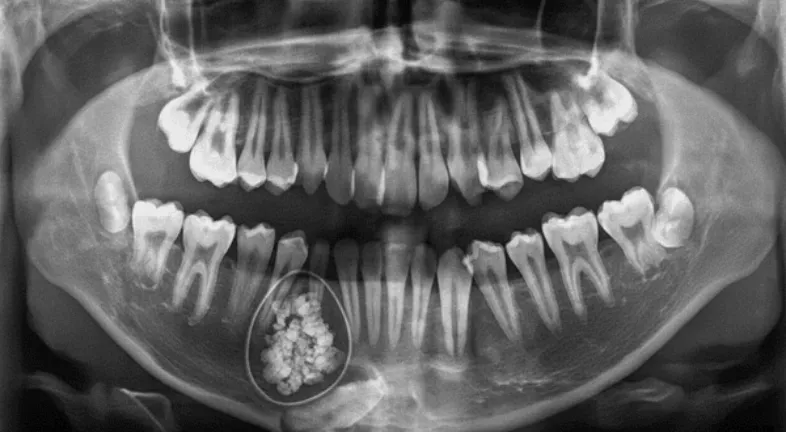
Table of contents
When a single tooth is misaligned it can sabotage your whole smile, put a big dent in your confidence, and lead to oral health issues. And the trouble is because it feels like it’s a tiny problem, it often goes untreated. In this article, we’re going to talk about the oral health problems associated with a snaggle tooth and treatment options available.
It’s a term that Americans, in particular, use to describe a single tooth that is crooked, twisted, or pushed forward or behind the rest of the teeth. While in most western countries a snaggle tooth is viewed as an imperfection, in Japan it’s a different story. Snaggle teeth were once considered a (1) fashion statement and women paid to undergo a procedure known as “tsuke-yaeba” which involves creating a snaggle tooth ‘look’ using artificial teeth.
So, now you know what a snaggle tooth is, you’re probably wondering how to fix it. After all, most teeth straightening procedures or treatments such as braces and clear aligners cater to multiple teeth or even a complete row of teeth, don’t they?
Fortunately, not only is it possible to straighten a single tooth but it’s also more common than you might think. Patients have several treatment options but ultimately it’s up to them to decide the length they’re willing to go to fix a single tooth.
But before discussing the various treatments and their pros and cons there is another question we need to answer.
Generally speaking, a single crooked tooth is usually the result of overcrowding or a narrow roof mouth.
If there isn’t sufficient room for the teeth then it’s easy for one or more of them to get pushed forward or backwards.
Other reasons for misalignment or a single crooked tooth include:
There are several oral health problems associated with a single-tooth misalignment. Teeth that are overcrowded or overlapping become magnets for bacteria and are much harder to clean. Without treatment, both the affected tooth and those surrounding it can become more susceptible to tooth decay and gum disease. Also, a misaligned tooth can affect the bite making it difficult to chew certain foods. The additional pressure on the teeth can also lead to worn or cracked teeth and even TMJ disorders.
Dentists often recommend braces for straightening children’s teeth, usually during their teenage years. even if you wore braces as a child, you could still have an alignment problem since teeth continue to move through life largely due to poor oral health, wisdom teeth crowding, and habits like smoking. Consequently, (2) more and more adults are looking for ways to improve the alignment of teeth
Here are some of the most popular options for fixing a snaggle tooth.
Made from metal or ceramic, traditional braces are often recommended by an orthodontist because they are one of the most effective methods of straightening misaligned teeth. They use a network of brackets and wires to gradually apply pressure on the teeth, or in this, case tooth, to gradually move it into its correct position.
Most people, we’re sure, would consider braces an extreme option to move just one tooth. As well as the braces cost and the stigma sometimes associated with wearing metal braces, there’s daily maintenance to consider plus at least 12 months of regular dental visits to have the wires tightened.
If you want to go down the braces route, but want a faster treatment time, several types of fast braces focus on the teeth in the smile line and can be completed in half the time of traditional braces.
If you don’t want to wear traditional braces to straighten just one tooth then there are other options, namely retainers, palatial expanders and porcelain veneers
Retainers – Retainers are typically worn following braces treatment to prevent your teeth from moving back to their original position. However, if you have a single tooth that is only mildly crooked your dentist may recommend wearing a fixed retainer rather than a full brace.
Fixed retainers achieve good long-term results and are attached to the inside of the teeth to prevent them from moving. The downside is that they cannot be removed by the patient – even for quick relief.
Palatal expanders – An orthodontist uses these to widen the arch of the teeth in the upper jaw creating space for the teeth to move into their rightful positions. The equipment is attached to the upper molars and tightened with a special key to apply pressure to both sides of the jaw. While they remain barely visible, patients can expect slight discomfort when adjustments are made.
Porcelain veneers – This is more of a cosmetic treatment than a fix but nevertheless, it can and does work. Porcelain veneers are thin shells which are applied to the front surface of a tooth that is slightly misaligned. Once in place it gives the illusion of a straighter tooth. Since in most cases part of the tooth enamel has to be removed to accommodate them, the procedure is irreversible and will need replacing over time.
Clear aligners, often referred to as clear braces are a popular method of teeth straightening. In fact, they have seen huge exponential growth over the past decade or so and by 2027 it’s estimated that the clear aligners market will be worth a staggering (3) $6.0 billion.
Clear aligners consist of a series of removable aligners that offer a strong option for anyone wanting to align just a single tooth without too much interruption to their daily life.
At Caspersmile, clear aligners offer many benefits that include:
To straighten your teeth quickly, the best option often depends on your specific dental needs. Clear aligners can be a fast and less visible method for many, while traditional braces might be necessary for more complex adjustments. You should talk to your orthodontist about which treatment will work most efficiently for your situation.
Curated the best for your knowledge
.webp) Tooth Resorption: Causes, Symptoms, and Treatment Options
Tooth Resorption: Causes, Symptoms, and Treatment OptionsTooth resorption often goes unnoticed until real damage appears. Many people discover it during a routine dental visit and feel a wave of fear, wondering how such a hidden process could silently weaken their smile. The truth is that tooth resorption is more common than most expect, and early detection can make all the difference. By understanding why it happens, how it progresses, and which treatments actually work, you can protect your teeth with confidence. You don’t have to feel overwhelmed. When you know what to look for, you stay one step ahead and safeguard your long-term oral health.
Read More Teeth Troubles Explained: Causes, Symptoms & Fixes
Teeth Troubles Explained: Causes, Symptoms & Fixes Teeth problems happen when we take our pearly whites for granted. When our smile is nice and healthy, we don’t think much about it. And the moment things go south, we panic. Saving, or remaking, that smile becomes a priority. For some, though, the issues are present right from the start. Misalignment, bite issues, and teeth troubles that are more “structural” in nature. They don’t happen due to neglect; rather, they are given by luck, God, nature, whatever you believe in. That being said, no matter the type of tooth trouble, there’s a solution out there. And we’re exploring all that today, teeth diseases and treatment, one by one.
Read More Odontomas: What They Are and How They're Treated
Odontomas: What They Are and How They're TreatedSome dental conditions are quiet. Too quiet, in fact. Odontomas fall into that category. They rarely make noise, yet they change things beneath the surface. And people usually have no idea about them. While malocclusions, teeth shifting, discoloration, or other cosmetic dental issues are fairly well known, odontomas are not. So, an odontoma is technically a type of tooth tumor. It’s benign, harmless, but oddly structured. Hence, it can interfere with tooth eruption, displace teeth, or cause swelling. However, there’s more to it. Here’s a deeper dive.
Read MoreQuick Links

Heading